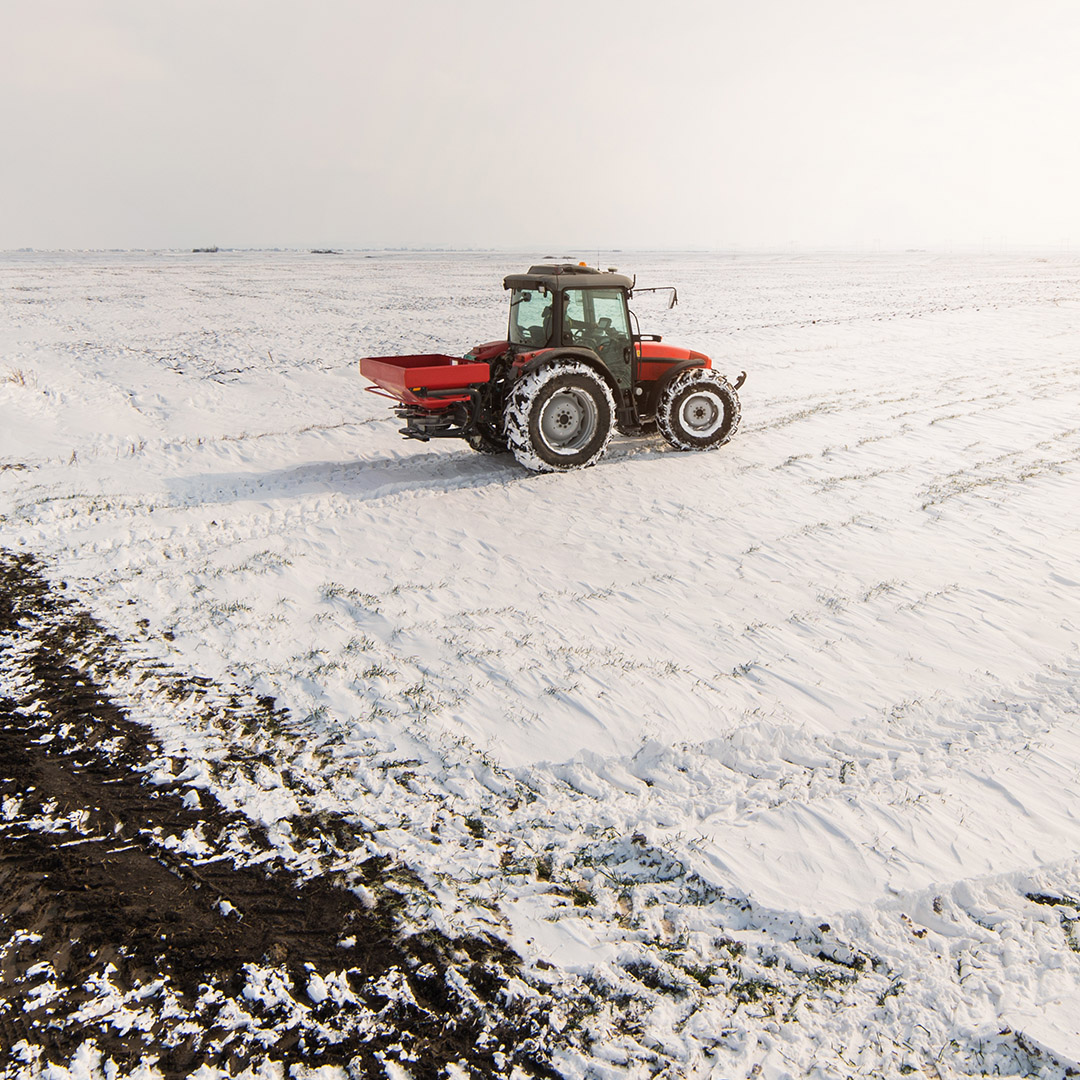In this week’s edition of Growing Possibilities, we look at how soil microbes survive the winter. Yes they can hibernate, in a microorganism sort of way. We also look at what effect (if any) tillage practices and crop residue have on overwintering soil microbes.
Some soil microbes can survive extreme cold, with certain varieties persisting in cold weather up to -39°C (-38°F). They do this using various methods, like living in pockets of water with high salt content or through sporulation. During the winter, soil microbes will lower their metabolic activities, sporulate, or die off. The depth at which the microbes reside can also influence their lifespan. Microorganisms will “swim” towards their preferred temperature through a function called “thermotaxis”; in last week’s blog, we explored chemotaxis, which is how bacteria move towards a chemical stimulant. Thermotaxis is similar. The flagellated bacteria (bacteria that have tails) use these tails to push themselves towards more favorable temperature ranges (2). But can disruption of the soil (tillage) affect the process of thermotaxis?
There is not a lot of research specifically detailing exactly how tillage affects the overall soil microbial ecosystem during the winter. It is known that conventional tillage disrupts and disperses the soil macroaggregates (3). Macroaggregates in the soil’s O horizon have been found to break apart after initial freeze-thaw events, as the arbuscular mycorrhizal fungi are particularly sensitive to these changes in temperature (4). So regardless of tillage method, macroaggregates will break down, releasing their microaggregates and nutrients into the soil (5). However, it is possible that conventional tillage could negatively affect bacterial population numbers as temperature-sensitive microbes that sought out the deeper, warmer layers of the soil (through thermotaxis) are relocated to higher, colder soils in which they cannot survive (2,6).
What about cover crops and crop residue? Do those help overwintering microbes? Again, the answer is possibly, but indirectly. Winter cover crops or crop residue will release soil organic matter as they decompose throughout the fall and winter. This extra carbon (C) will contribute to the soil organic pools, as the dissolved organic C concentrations will slowly reduce after each freeze-thaw event. (7). Soil temperature fluctuations may also be lessened with cover crops or crop residue (6).
The freezing process will eventually slow or halt the nutrient cycling of most microorganisms in the soil, as well as disrupt the breakdown of plant litter (8). Meaning that while crop residue can possibly help to protect soil microbes in fall, everything freezes in winter. The real advantage of crop residue won’t be apparent until the spring, when the microbes restart their metabolism and nutrient cycling begins again. Crop residues may also increase fertility of the soil, and help the soil retain nutrients when the spring thaw normally washes them away.
While we lack hard evidence to say one way or the other the exact effects of tillage and crop residue on overwintering microbial populations, one thing is certain: sub-zero temperatures have an adverse effect on soil microbial populations. This is why if you live in an area that experiences freeze-thaw events, it is important to inoculate every spring in order to ensure the best nitrogen fixation for your crops. Inoculants like XiteBio® SoyRhizo® and XiteBio® PulseRhizo® ensure that your soil has a vigorous microbial population, giving you atmospheric nitrogen fixation, and producing higher yielding crops next fall.
Resources
- https://xitebio.ca/can-growth-promoting-bacteria-survive-the-winter/
- https://www.ncbi.nlm.nih.gov/pmc/articles/PMC3475339/pdf/main.pdf
- https://xitebio.ca/to-till-or-not-to-till-that-is-the-question/
- https://www.frontiersin.org/articles/10.3389/fmicb.2020.01164/full
- https://ecologicalprocesses.springeropen.com/articles/10.1186/s13717-021-00337-x
- https://www.ncbi.nlm.nih.gov/pmc/articles/PMC9015707/pdf/fmicb-13-847005.pdf
- https://www.sciencedirect.com/science/article/abs/pii/S003807171730127X?via%3Dihub
- https://www.sciencedirect.com/science/article/abs/pii/S0038071706005220?via%3Dihub


